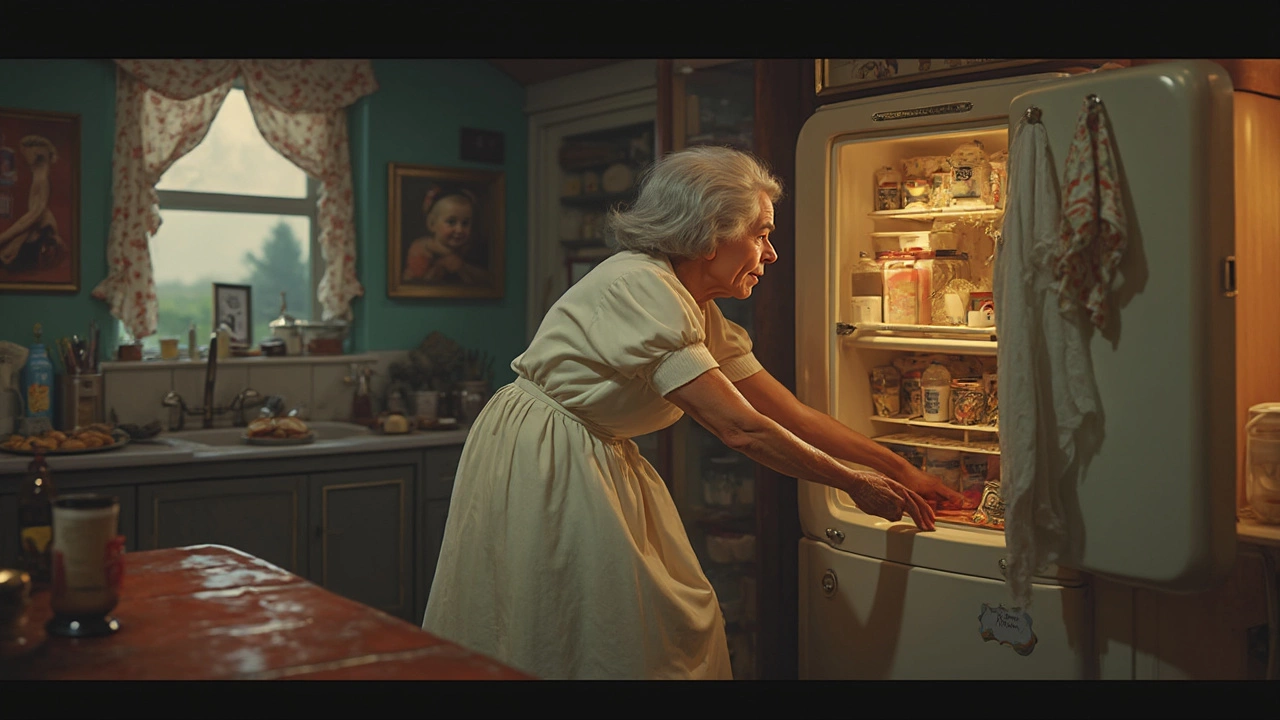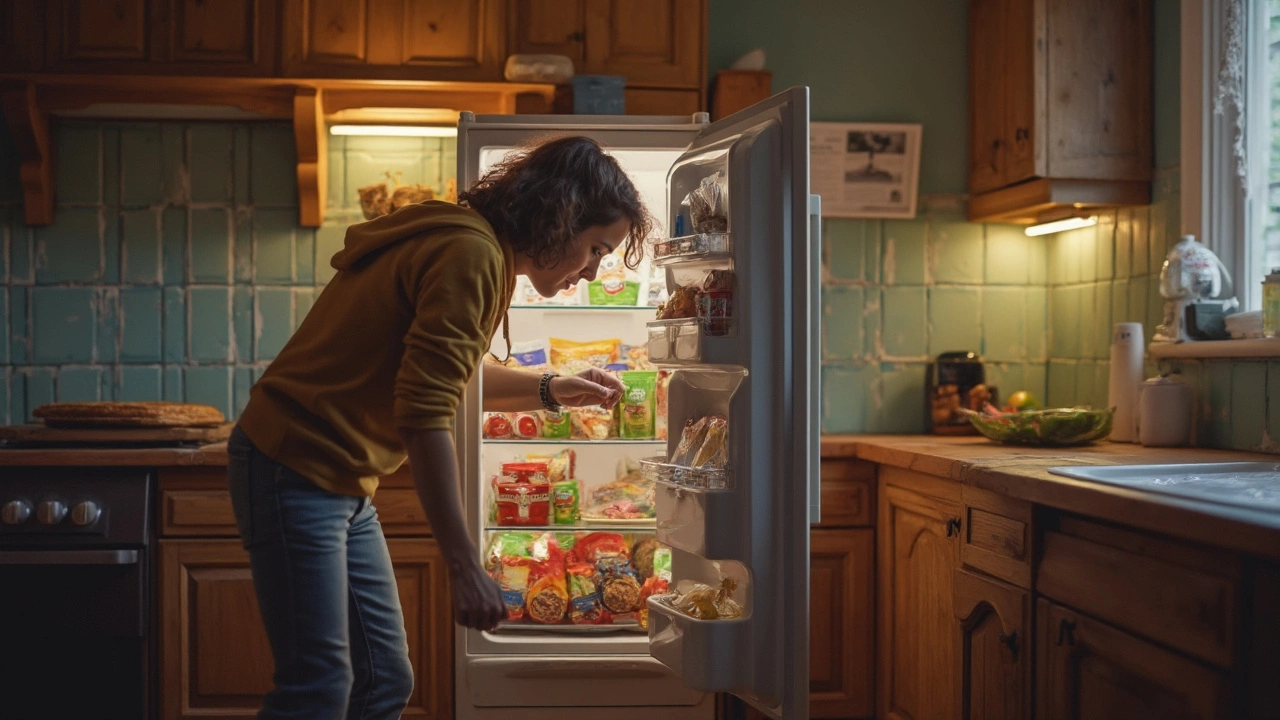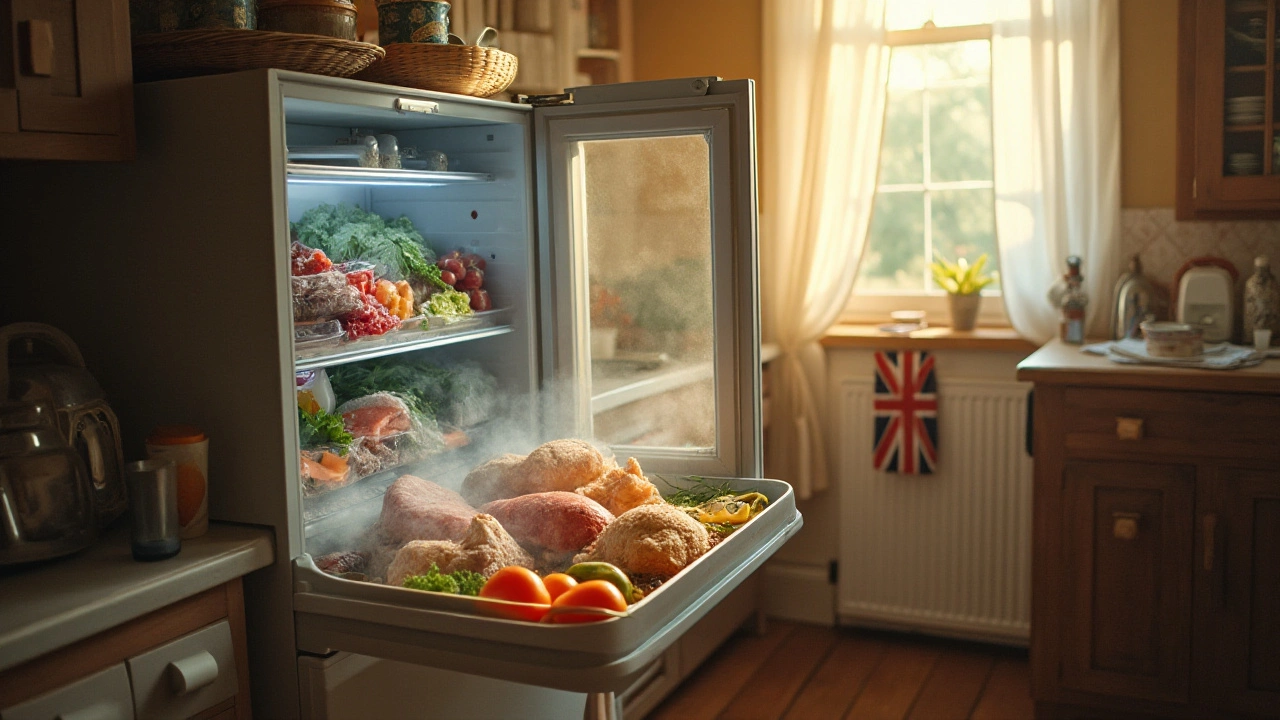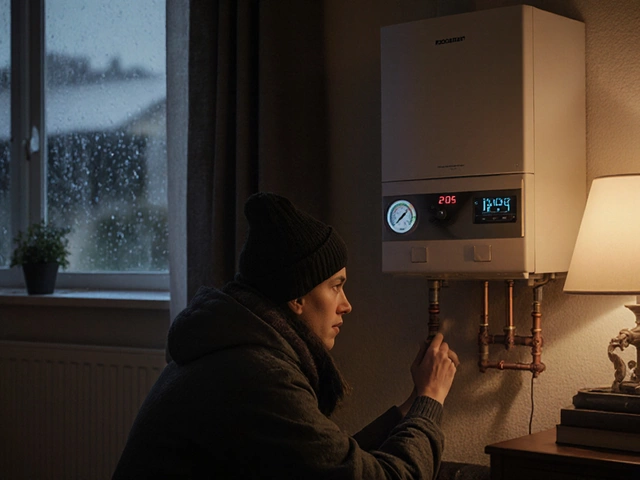Nothing ruins a grocery haul faster than a freezer full of half-thawed chicken nuggets or melting ice cream. If you've noticed your frozen goods looking suspiciously soggy or the popsicles bending instead of snapping, your freezer might be on the fritz.
The first thing to check? The temperature. Stick your hand in there. Are your frozen foods actually frozen or just cold? If the freezer feels more like a refrigerator, that's a red flag. Don't trust the numbers on the dial—older freezers lie. Use a thermometer and aim for zero degrees Fahrenheit (about minus 18 Celsius).
Another classic sign: puddles on the floor or frost building up like you're living inside a snow globe. You shouldn't see a layer of ice thicker than your fingernail. If you hear odd clicking, buzzing, or grinding sounds, that's not normal background noise. Freezers aren't meant to perform a rock concert.
Don't forget the power. Sometimes Tristan yanks the cord while chasing after the dog, and we don't notice until later. Double-check your outlet and make sure nobody (especially any mischief-makers in the house) has unplugged it. Quick fixes like closing the door firmly, checking the gasket for cracks, or vacuuming the coils can make a surprising difference.
- Obvious Signs Your Freezer Is Failing
- Checking Temperatures Like a Pro
- Strange Noises and Odd Smells
- DIY Troubleshooting Steps
- When to Call a Repair Expert
Obvious Signs Your Freezer Is Failing
First things first, if your ice cream turns to soup or your pizza is floppy instead of frozen solid, your freezer’s sending a loud SOS. Most folks notice right away when frozen foods start to go soft or even develop frostbite—both are bad news. When food thaws and refreezes, you’re risking unsafe bacteria and possible stomach trouble. That’s why it pays to trust your gut (and your hands) when checking your freezer repair needs.
Most broken freezers also leave clues you can see and smell. Here are a few to watch for:
- Water on the floor: Not normal. If you see puddles under your freezer, it’s a sign something’s leaking or not sealing correctly.
- Frost or ice buildup: Sure, some frost is okay—but thick, heavy ice on the walls or ceiling? That wastes energy and makes the freezer work overtime.
- Weird food texture or taste: If steak or chicken suddenly tastes funny, or veggies are unappetizing, your freezer might have stopped maintaining the right temperature for a while.
- Freezer runs non-stop: If it’s humming all day, it’s probably struggling to cool. A healthy freezer cycles on and off.
- Musty or foul smells: Really bad odors mean food has spoiled. Usually that means the freezer’s been above freezing for too long.
Keep an eye out for these warning signs. The quicker you spot them, the less likely you’ll need to toss everything and start grocery shopping from scratch.
Checking Temperatures Like a Pro
Most folks just trust their freezer’s cold blast and hope for the best, but if you want to be sure your stuff stays safe, you’ve got to measure what’s happening inside. Freezers aren’t supposed to hover around “pretty cold”—they should sit at zero degrees Fahrenheit (about -18 Celsius). If you don’t have a fridge/freezer thermometer yet, those little dial ones cost just a few bucks at any supermarket. Even a digital grilling thermometer works in a pinch.
Here’s a simple, step-by-step way to check if yours is holding the right temp:
- Put a thermometer in the center (not against the wall or door).
- Wait at least 8 hours—overnight is perfect, since opening the door resets the reading.
- Read the temperature. If it’s over zero, you've got a problem. Even 5°F (-15°C) can lead to unsafe food or freezer burn.
Bumping the temperature up or down using the freezer’s control knob doesn’t always fix things. If you crank the control all the way and your frozen pizza still doesn’t feel like a brick, something bigger is wrong.
| Freezer Temp | What It Means |
|---|---|
| 0°F (-18°C) or below | Perfect, keep it here! |
| 1-5°F (-17 to -15°C) | Not ideal, check airflow and settings |
| 6°F to 32°F (-14 to 0°C) | Too warm, risking food safety |
If you find the temperature isn’t right but the door is sealed up tight and the power’s steady, defrosting might help. Too much ice buildup can mess with airflow. And if your thermometer keeps saying it’s too warm, that’s when you want to look up freezer repair services before your food turns into a science project.
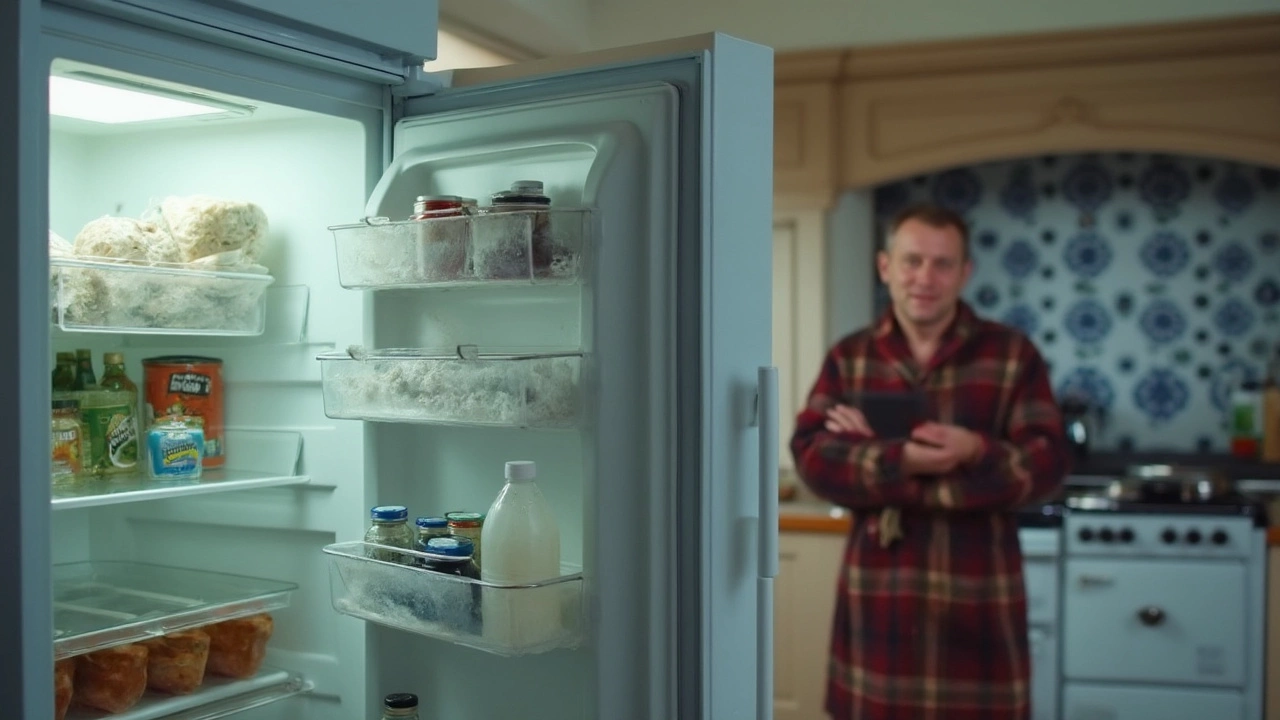
Strange Noises and Odd Smells
Noticing weird sounds or funky odors from your freezer isn’t just annoying—it can be a sign something’s heading south. A properly working freezer should hum along quietly, with just the occasional click from the compressor.
Let’s break down which sounds deserve side-eye:
- Buzzing or clicking: Frequent, loud clicks or buzzes can mean the start relay is failing. That’s basically the part that helps turn the compressor on and off. If the compressor isn’t firing up, your freezer’s not going to cool right.
- Grinding: If it sounds like rocks in a blender, that’s likely an issue with a fan or the compressor. You might find your freezer temp all over the place if a fan goes bad.
- Gurgling or sloshing: Some mild gurgling is normal (it’s just refrigerant moving around), but loud or constant sloshing can be a warning sign of a leak or bigger mechanical problem.
Smells are another story. Freezer odors can range from that stale fish smell to straight up burning plastic. Here’s what to look for:
- Musty or sour odor: Usually means food has gone off. Easy fix: toss bad items, then clean out the freezer.
- Rotten eggs or a burning smell: This is where you don’t mess around. A burning smell may point to overheating electrical parts or wiring. If it stinks like rotten eggs, it could be leaking refrigerant, which is toxic and a big deal.
Here’s a quick look at common sounds and smells, and what they could mean:
| Noise/Smell | Possible Cause | What To Do |
|---|---|---|
| Buzzing/Clicking | Start relay failure | Consider relay replacement |
| Grinding | Faulty fan or compressor | Check fans, call repair if persistent |
| Constant Gurgling | Refrigerant issue | Call a tech ASAP |
| Musty Smell | Spoiled food | Clean freezer, check food |
| Burning Plastic Smell | Electrical trouble | Unplug and get pros in |
| Rotten Egg Smell | Refrigerant leak | Ventilate, call a pro |
A quick Google search or look at the manual can help, but ignoring a bad noise or smell can turn a simple freezer repair into a full-on appliance funeral. If anything smells like it’s burning, unplug it and call for help. It’s not worth risking your safety or your frozen pizza stash.
DIY Troubleshooting Steps
If your freezer is on the blink, you don't have to panic—or haul it to the curb right away. Most fixes are simple, and you can often spot the problem without any fancy tools (unless you count a screwdriver or your smartphone flashlight).
Start with the basics. Is your freezer plugged in all the way? Gently nudge the plug—it’s silly how often this is the issue. Next up: check if your outlet is working. Plug in something else (like a phone charger). If that’s dead too, you’ve got an electrical problem, not a freezer repair issue.
If the power’s fine, move on to these steps:
- Look at the Door Seal: Open and close the door. If it doesn’t stick, cold air might be slipping out. Run your hand around the edge—feel any cold air? Try the dollar-bill test: close the door on a bill and pull. If it slides out with no resistance, the gasket needs attention.
- Inspect the Temperature Dial: Double-check you didn’t accidentally bump it while stuffing in groceries. Some dials get nudged way too easily, especially by bags of frozen veggies.
- Clear the Vents: Blocked vents mean your food won’t get cold. Make sure nothing (think big ice cream tubs) blocks airflow inside the freezer.
- Manual Defrost: If your freezer is covered with frost, unplug it and let the ice melt. Toss any ruined food, then plug it back in and see if things get colder.
- Clean the Condenser Coils: Dusty coils can make your freezer work too hard. Grab a vacuum or brush and clean off the back or underneath (wherever the coils are exposed).
- Listen for Noises: Humming and quiet clicks are okay. If you hear constant clicking, buzzing, or knocking, you’re dealing with a mechanical problem.
Don’t just take my word for it. As noted by appliance professional James Duffy,
"Easily 30% of freezer problems are coil or airflow related, and nine times out of ten, cleaning the coils and clearing vents fixes the issue."
To put it in perspective, here’s a quick table showing what usually causes freezer trouble:
| Problem | Percent of Cases | Easy Fix? |
|---|---|---|
| Dirty Coils | 30% | Yes |
| Blocked Vents | 20% | Yes |
| Bad Door Seal | 25% | Yes |
| Power/Plug Issue | 15% | Yes |
| Mechanical Failure | 10% | No |
If you work through this list and your frozen pizza is still soggy, then it’s probably time to call in the experts. Try these steps first—sometimes just unplugging and plugging your freezer back in will save you a lot of hassle (and money).

When to Call a Repair Expert
At some point, trying to fix the freezer on your own stops making sense. Here’s how to know it’s time to call in a pro. If your freezer isn’t chilling anything close to zero degrees, and you’ve checked the basics (like outlets, settings, door seals, and cleaned the coils), it’s probably not a quick DIY fix. Any sign of a strong burning smell, loud and constant clicks, or a compressor that won’t turn on means it’s time for help immediately. Messing around with electrical components without know-how puts you and your stuff at risk.
Another red flag: if the freezer keeps tripping the breaker or you spot rust, corrosion, or water pooling inside—you’re better off calling someone who knows freezers inside out. If the refrigerant lines are leaking, that’s a big deal. Only certified techs should handle refrigerant because of safety rules and environmental laws.
- Freezer repair pros have diagnostic tools regular folks don’t. They can test the compressor, fans, thermostat, and all those sensors in about ten minutes.
- If your food thaws out more than once in a month, or it takes more than 24 hours for fresh food to freeze, the motor or coolant might be fading.
- Warranties matter. If your freezer’s less than five years old, manufacturers sometimes cover repairs—don’t void it by poking around too much.
Wondering what issues repair experts see most? Here’s a quick snapshot:
| Problem | How Often Pros See It (%) |
|---|---|
| Compressor failure | 35 |
| Thermostat broken | 22 |
| Door seal/gasket issues | 18 |
| Coolant/refrigerant leaks | 10 |
| Electrical wiring problems | 8 |
| Other | 7 |
If fixing it costs nearly half as much as buying a new freezer—especially if yours is over ten years old—it’s usually smarter to replace it. But if a repair’s quick and the part’s covered under warranty, go with the pro and save the hassle (and your frozen pizza stash).
